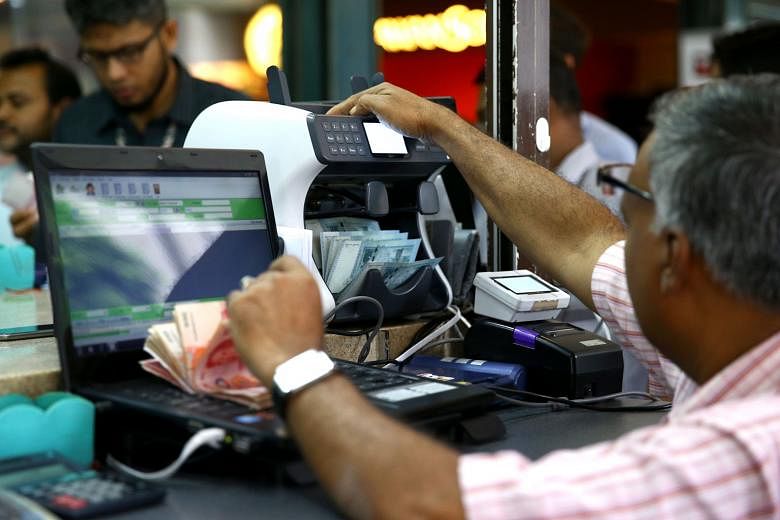Many firms do not expect Thursday's light touch of monetary easing to stoke export growth here.
This is not surprising, as Singapore's goal in managing its exchange rate is to control imported inflation, and not trade growth.
OCBC economist Selena Ling said: "I don't think the move in itself will make us more competitive. The reality is that global growth is so sluggish, unless you're talking about an outsized depreciation of 15 per cent to 20 per cent, it won't make a difference."
On Thursday, the Monetary Authority of Singapore (MAS) said it had set the Singapore dollar on a path of zero appreciation, following two earlier rounds of easing in January and October last year.
The Singdollar fell more than 1 per cent against the greenback on the news, but the action stopped there. For exporters and importers alike, it is business as usual.
Currency volatility is just one of many market forces affecting vegetable prices, said Mr Chia Chong Peow, managing director of Chia Teck Shun Food Impex Co.
"The market rate fluctuates depending on the weather, the harvest, supply and demand. If the price of kang kong is high, you can change to other vegetables; there are so many," said Mr Chia, shrugging off the need for currency-hedging products.
A case in point - Malaysia's ringgit has been the best-performing regional currency this year. But Malaysia's proximity to Singapore also makes it a seller's market for vegetable farms, so Mr Chia had already been sourcing his main supply from China, India and Australia.
In China and India, prices are negotiated in United States dollars, he adds. The greenback may be down more than 3 per cent against the Singdollar so far this year but the slide is not extreme, alongside gyrations of some developing nations' currencies.
Many local traders have no need to hedge, said Singapore Coffee Association president Victor Mah: "They buy in US dollars and sell to roasters here in US dollars, so the people most affected would be the roasters because they buy in US dollars (but their revenues come in Singdollars)."
Mr Sunny Koh, deputy president of the Singapore Manufacturing Federation, said: "Currency fluctuations can always be controlled."
He has agreements with retailers to adjust prices up or down if they move by more than 3 per cent, so his exposure to currency risk is no more than 3 per cent.
Meanwhile, most economists expect the Singdollar to become cheaper in US dollar terms over the next six months.
But this will be driven by markets priming for US interest rate hikes, and has less to do with what path MAS chooses.
UOB economist Francis Tan said: "The US dollar will get more expensive, and Thursday's easing could make this trend sharper."
Correction note: An earlier version of this story stated that the Singdollar was down more than 3 per cent against the greenback so far this year. This is incorrect. It is the greenback that is down more than 3 per cent against the Singdollar. We are sorry for the error.


